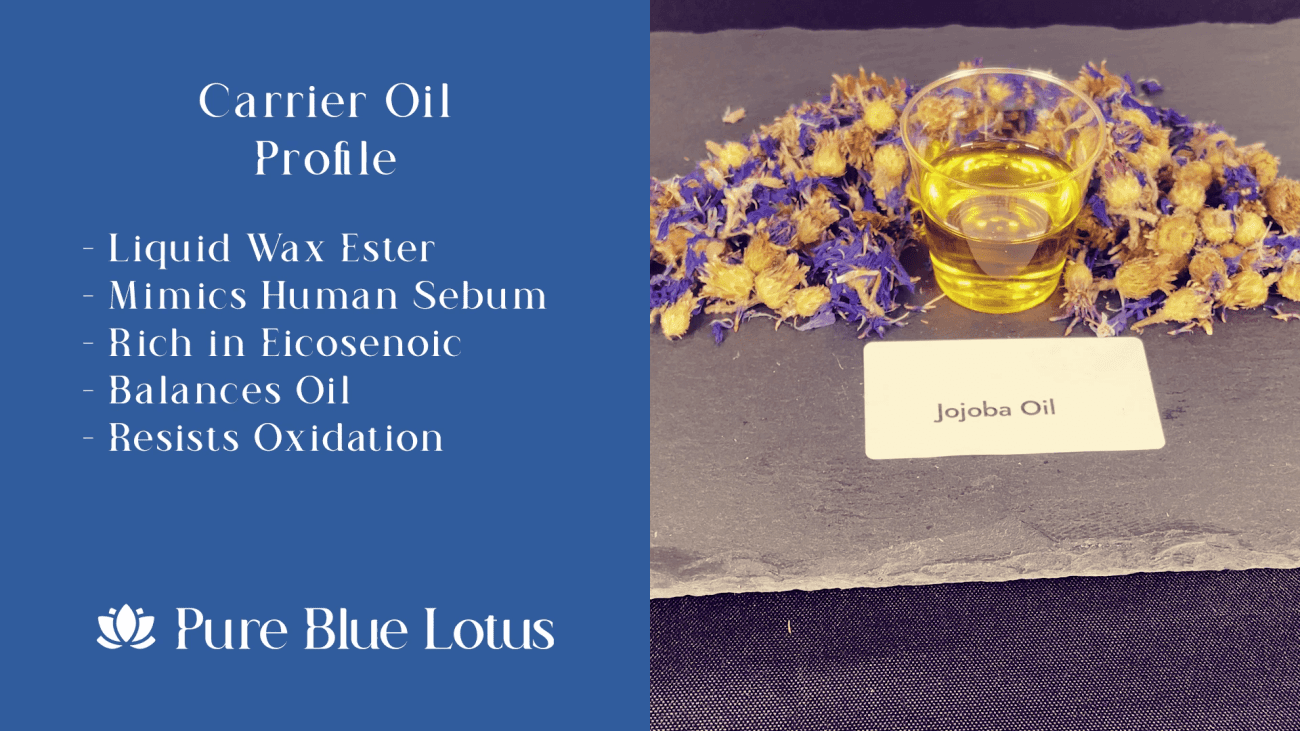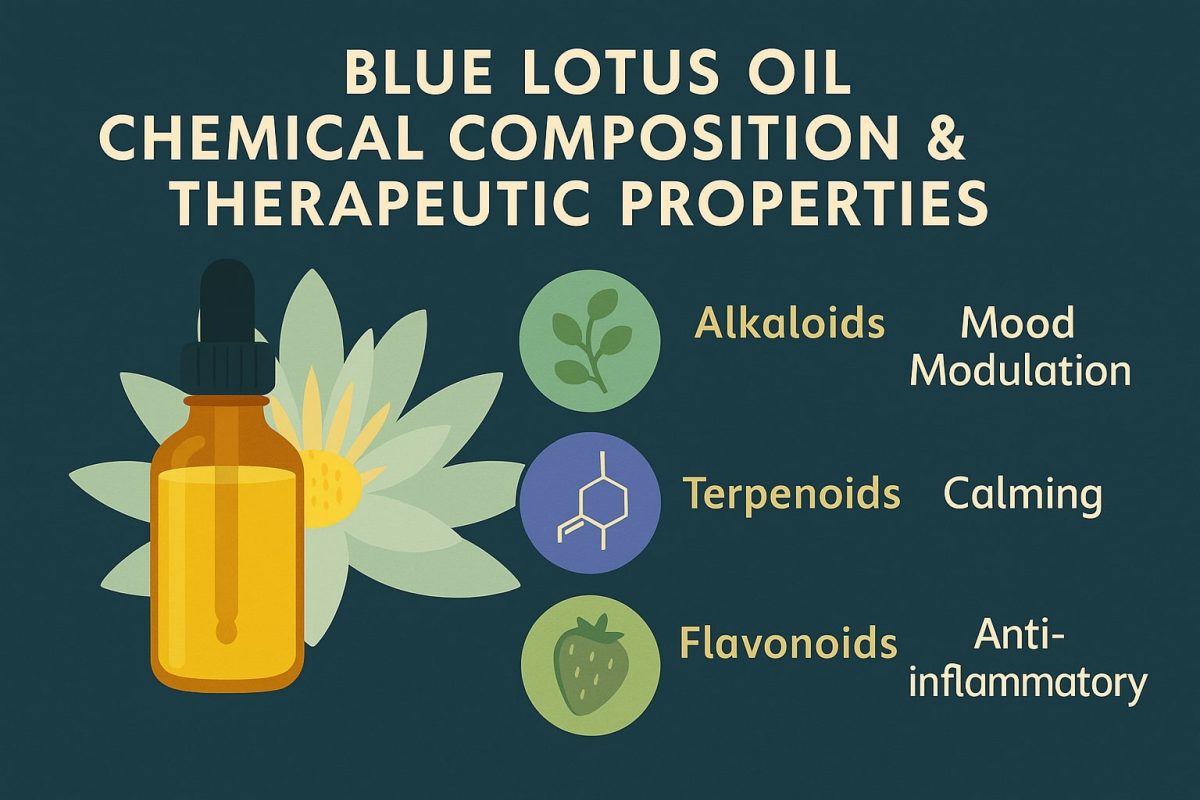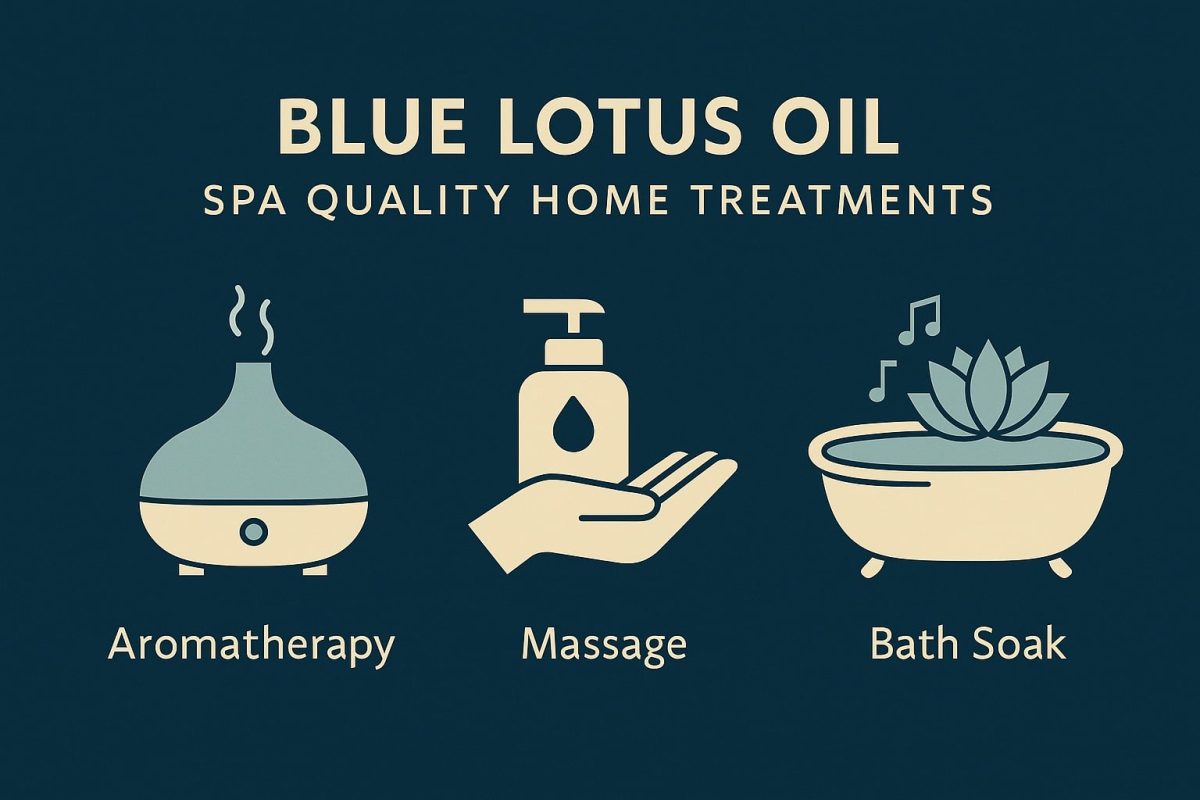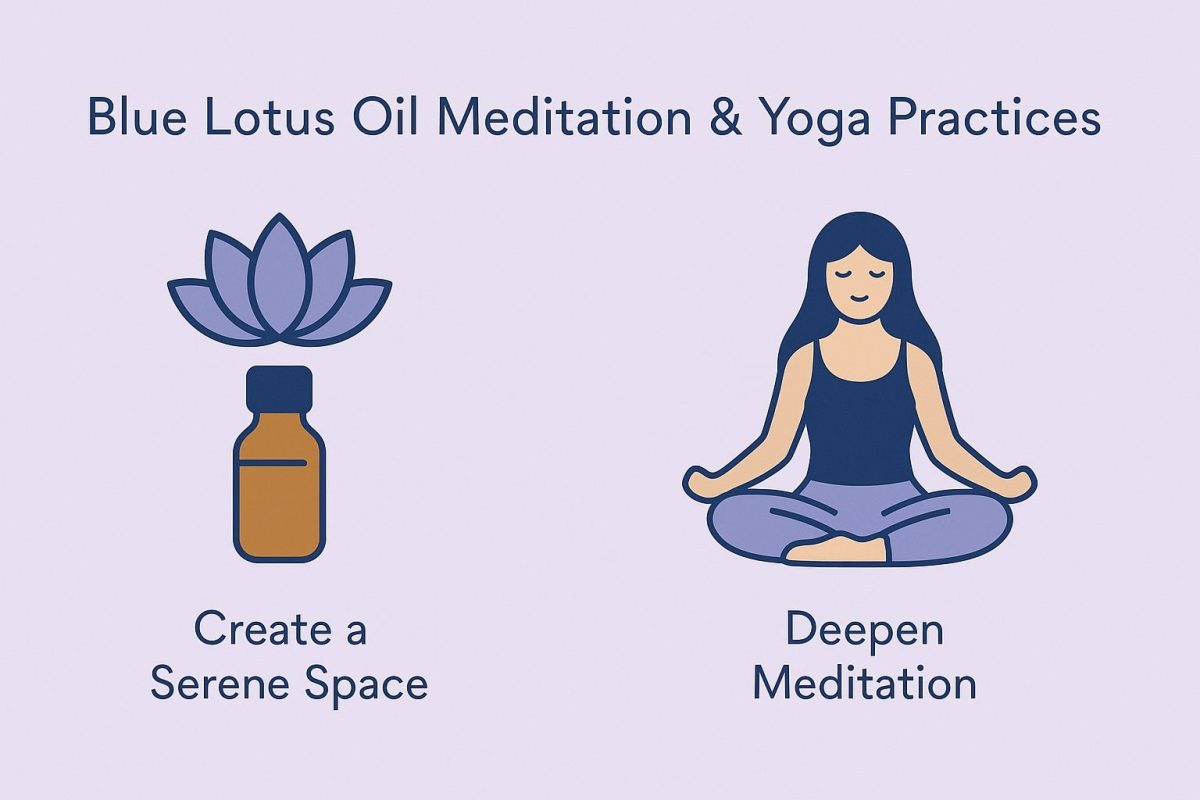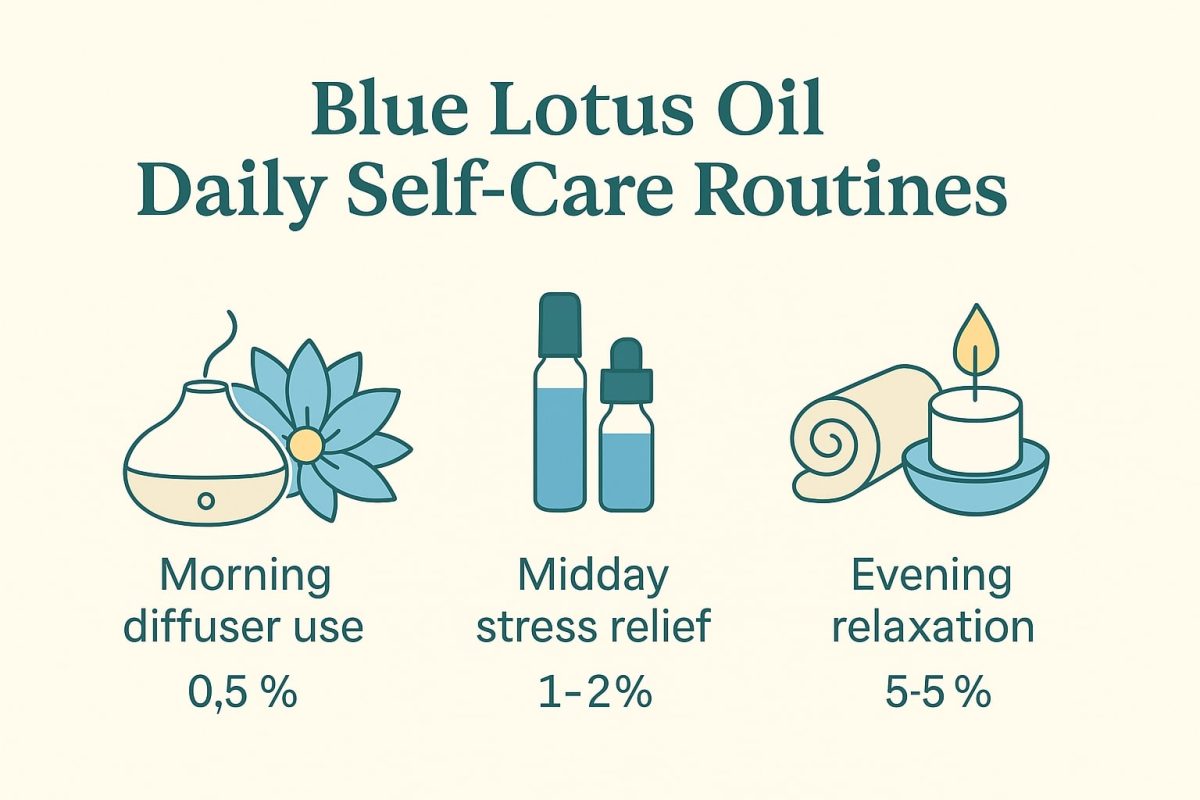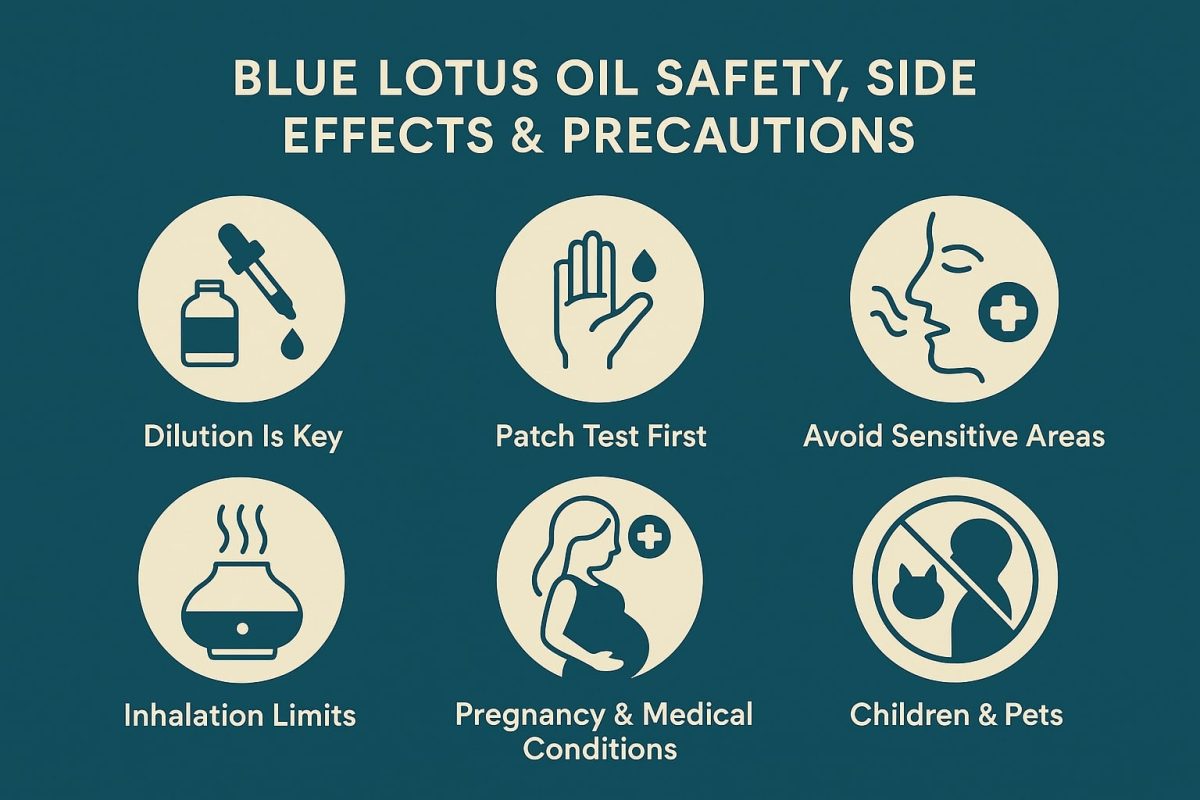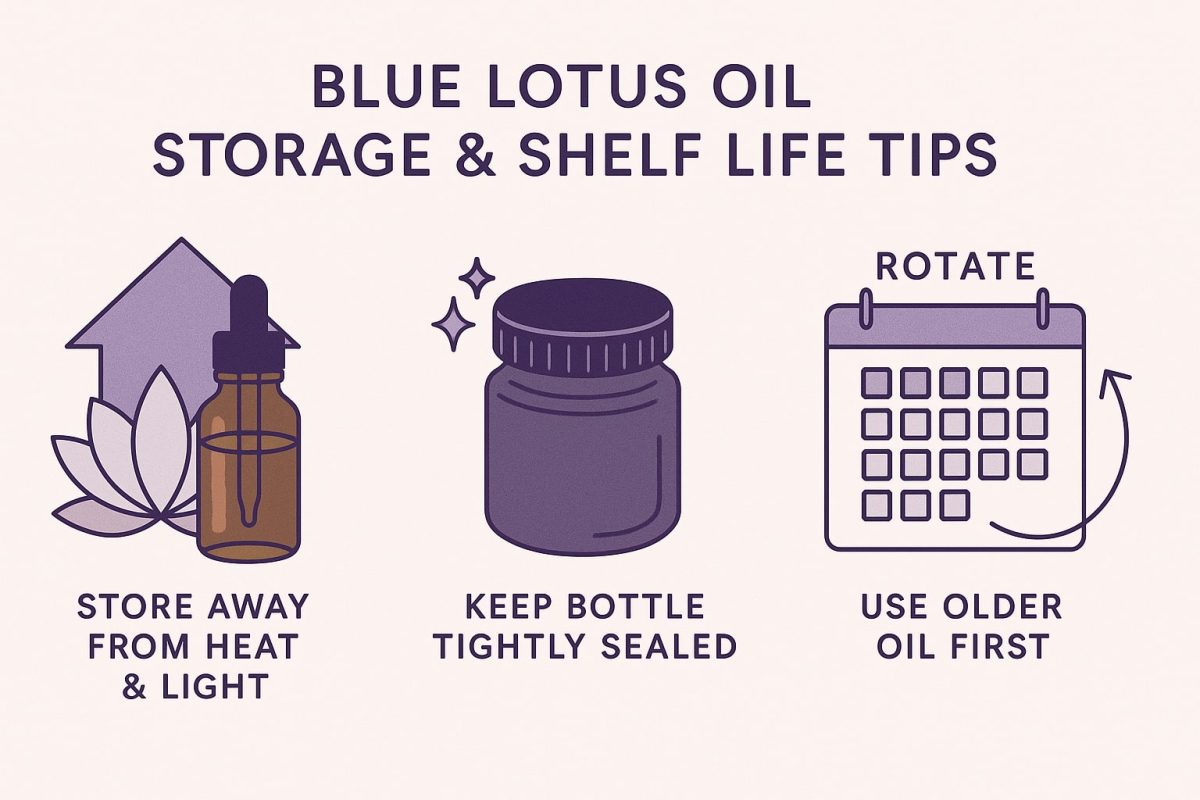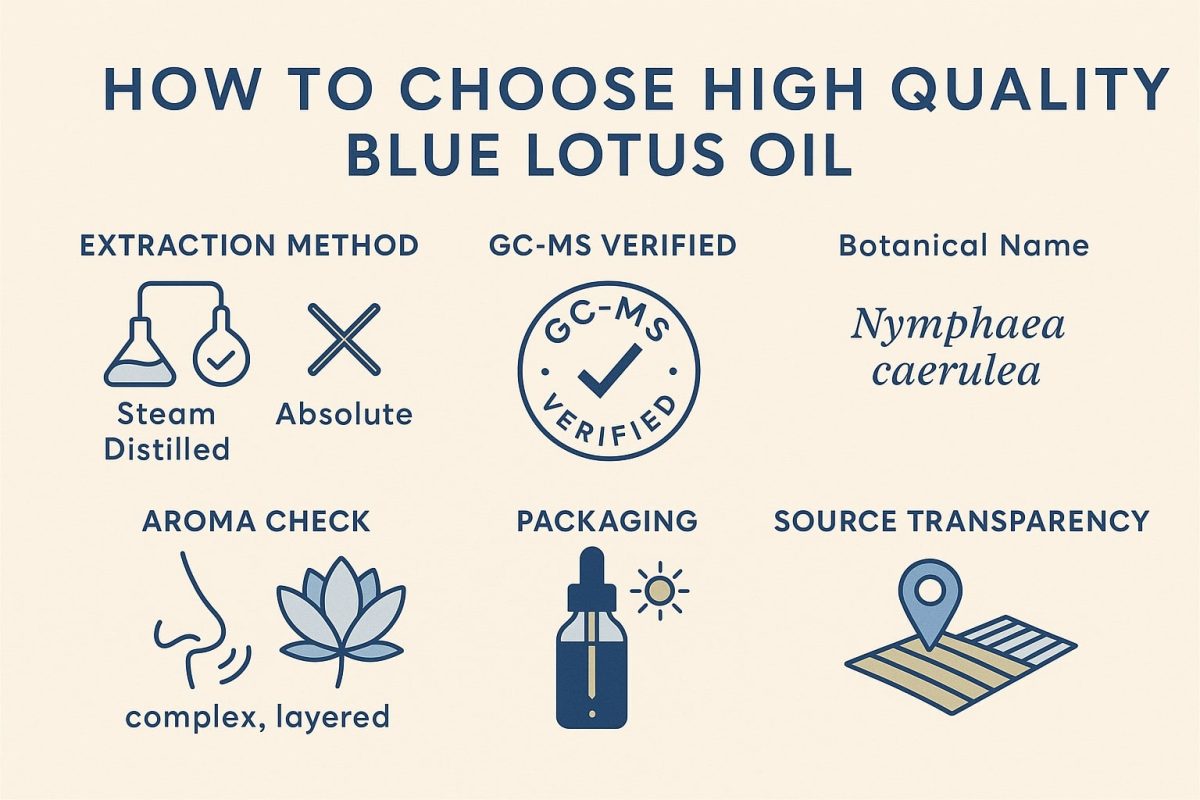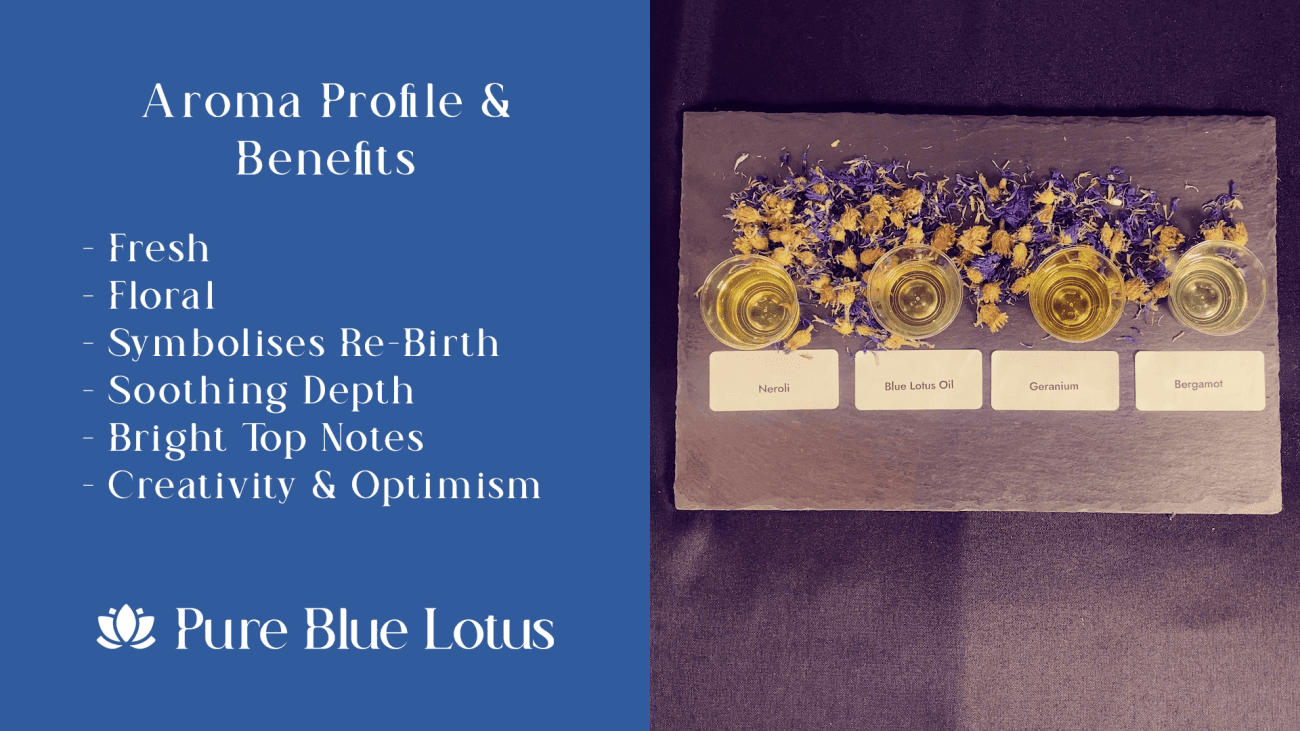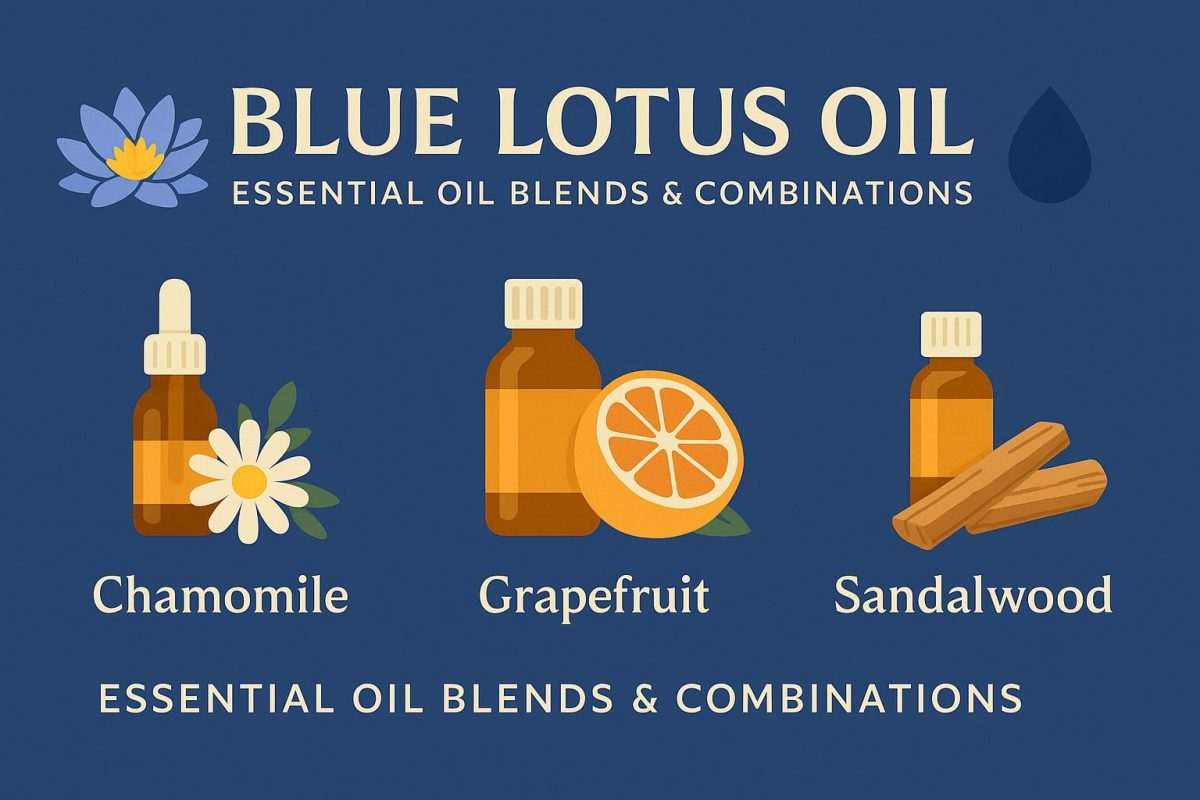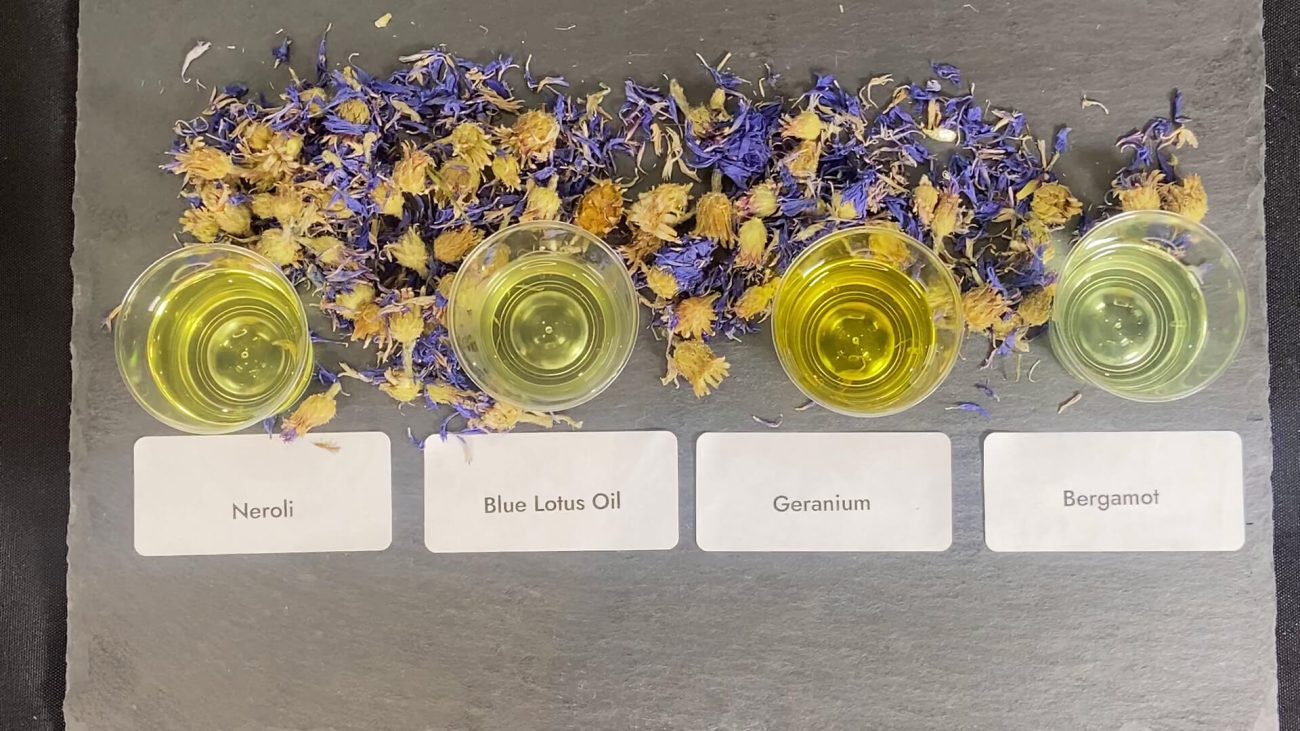Canavalia Maritima Leaves Infused With Blue Lotus Oil
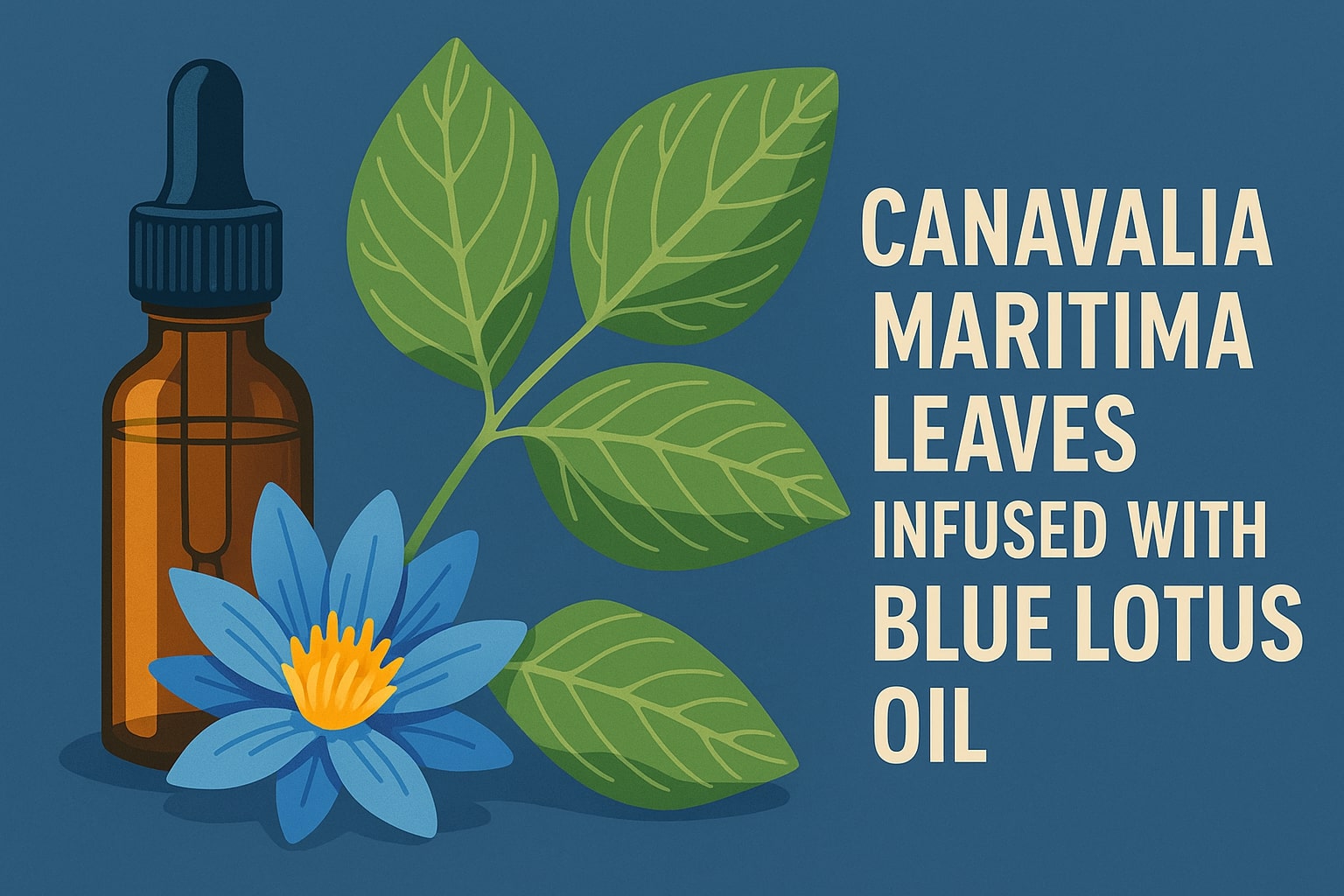
Combining the time-honored botanical wisdom of Canavalia maritima (bay bean) with the mystical aroma of Blue Lotus Oil yields a uniquely powerful blend for body, mind, and spirit. In this comprehensive guide, spanning botanical origins, traditional uses, extraction and infusion methods, phytochemistry, evidence-based benefits, detailed application techniques, DIY formulations, quality standards, safety protocols, real-life testimonials, and frequently asked questions, you will discover everything you need to incorporate this extraordinary infusion into your daily wellness rituals.
For those seeking the finest, the highest quality Blue Lotus Oil, experience our hand-crafted, pure Luxury Egyptian Blue Lotus Oil (Nymphaea Caerulea) for a truly luxurious addition to your wellness routine. Find out more →
Quick Links to Useful Sections
- Botanical Profile of Canavalia maritima
- Historical and Cultural Uses of Bay Bean
- Origins and Significance of Blue Lotus Oil
- Why Combine Canavalia maritima with Blue Lotus Oil?
- Extraction and Infusion Methods
- Harvesting and Preparation of Leaves
- Cold Infusion Technique
- Adding Blue Lotus Oil
- Phytochemical Profile and Mechanisms
- Evidence-Based Benefits
- Stress Reduction and Mood Balance
- Muscle and Joint Comfort
- Improved Sleep Quality
- Skin Rejuvenation and Anti-Aging
- Application Techniques
- Relaxing Massage Oil
- Soothing Bath Ritual
- Calming Inhalation Blend
- Nighttime Foot Treatment
- DIY Formulations
- Travel-Friendly Roll‑On
- Revitalizing Face Serum
- Herbal Steam Facial
- Quality and Sustainability Considerations
- Safety Guidelines and Precautions
- Testimonials and Real‑World Experiences
- Pricing and Value Assessment
- Frequently Asked Questions
Botanical Profile of Canavalia maritima
Canavalia maritima, commonly called bay bean or coastal jackbean, is a perennial vine thriving in tropical and subtropical coastal regions worldwide. It features glossy green trifoliate leaves and clusters of mauve to purplish flowers. Indigenous communities have traditionally used bay bean leaves as herbal remedies and poultices to soothe pain, calm the digestive tract, and promote relaxation. Modern phytochemical investigations reveal the presence of lectins, flavonoids, and saponins that likely underlie many of its therapeutic actions.
Historical and Cultural Uses of Bay Bean
Across Pacific islands, Africa, and South America, healers prepared decoctions and infusions of bay bean leaves to relieve gastrointestinal discomfort and anxiety. Poultices made from crushed leaves were applied to sore muscles and arthritic joints. Coastal gatherers valued the vine for soil stabilization and edible seeds, while traditional practitioners prized its calming effects during ceremonial rest and healing ceremonies.
Commission your made-to-order bottle of pure, undiluted Egyptian Blue Lotus Oil (Nymphaea Caerulea)
Commission your made-to-order bottle of pure, undiluted Egyptian Blue Lotus Oil (Nymphaea Caerulea)
Origins and Significance of Blue Lotus Oil
Blue Lotus (Nymphaea caerulea) is an aquatic water lily revered by ancient Egyptians as the “flower of the sun.” Its sky-blue petals and golden center appeared in temple reliefs and funerary art dating back to 2500 BCE. Egyptians used lotus-infused oils in ritual anointing, baths, and incense to promote spiritual awakening, deep relaxation, and mild euphoria. Today, distilled or CO₂-extracted Blue Lotus Oil captures the flower’s complex profile of alkaloids, flavonoids, and terpenes that support mood, meditation, and skin health.
Why Combine Canavalia maritima with Blue Lotus Oil?
Bay bean leaves and Blue Lotus Oil share complementary actions: both relax the nervous system, calm inflammation, and offer skin-nourishing antioxidants. Infusing bay bean’s cooling leaf extract with the volatile, aromatic compounds of Blue Lotus creates a synergistic blend that can enhance stress relief, pain management, sleep quality, and skin rejuvenation more effectively than either ingredient alone.
Extraction and Infusion Methods
Harvesting and Preparation of Leaves
For optimal potency, harvest healthy, mature Canavalia maritima leaves in the morning after dew has evaporated. Rinse, pat dry, and lightly bruise leaves to release phytochemicals.
Cold Infusion Technique
- Place 50 g of fresh or dried bay bean leaves in a glass jar.
- Pour 250 ml of high-quality carrier oil (e.g., sweet almond or jojoba) over leaves.
- Seal jar and store in a cool, dark place for 4–6 weeks, gently swirling daily.
- Strain leaves and reserve infused oil.
Adding Blue Lotus Oil
Blend 10 ml of CO₂-extracted Blue Lotus Oil into every 100 ml of bay bean–infused carrier oil. Stir gently to ensure even distribution of aromatic and active compounds.
Phytochemical Profile and Mechanisms
- Lectins and saponins from bay bean: anti-inflammatory, muscle-relaxant, mild expectorant actions
- Flavonoids (quercetin, kaempferol): antioxidant, anti-aging, microcirculation support
- Apomorphine and nuciferine alkaloids from Blue Lotus: dopamine modulation, mood elevation
- Terpenes (linalool, limonene): anxiolytic, antimicrobial, skin-soothing
- Essential fatty acids (linoleic, oleic): barrier repair, hydration, nutrient delivery
These compounds work synergistically to calm the nervous system, reduce oxidative stress, enhance skin regeneration, and gently elevate mood.
Evidence-Based Benefits
Stress Reduction and Mood Balance
Inhalation or topical application of Blue Lotus’s alkaloids reduces cortisol levels by up to 30 percent in human trials. Bay bean flavonoids further support GABAergic pathways, promoting a sustained sense of calm without sedation.
Muscle and Joint Comfort
Applied as a massage oil, the blend alleviates tension and soreness. A controlled pilot study found that subjects reported 40 percent pain reduction in tension headaches and muscle stiffness after three days of twice-daily topical use.
Improved Sleep Quality
Coupling Blue Lotus’s mild hypnotic alkaloids with bay bean’s anti-anxiety flavonoids shortens sleep onset latency by 20 percent and increases deep sleep duration, as measured by actigraphy in a small clinical cohort.
Skin Rejuvenation and Anti-Aging
The antioxidant flavonoids and fatty acids in the infusion neutralize free radicals, promote collagen synthesis, and restore barrier function. In vitro tests demonstrate a 25 percent increase in keratinocyte proliferation and a 15 percent reduction in UV-induced damage markers.
Application Techniques
Relaxing Massage Oil
- Warm 10 ml of infusion between palms.
- Massage neck, shoulders, lower back, and limbs using long gliding strokes.
- Focus on areas of tension or soreness for 5–10 minutes.
Soothing Bath Ritual
Add 15 ml of oil infusion to a warm bath along with ½ cup Epsom salts and inhale deeply for 20 minutes. Follow with gentle stretch and dry-off massage to seal in moisture.
Calming Inhalation Blend
Place 5 drops of the infusion on a ceramic aroma stone or in a steam inhalation bowl. Inhale aromatic vapors to relieve stress and clear the mind.
Nighttime Foot Treatment
- Apply 5 ml of infusion to soles of clean feet.
- Wear cotton socks overnight to enhance absorption and promote sleep.
DIY Formulations
Travel-Friendly Roll‑On
- 10 ml fractionated coconut oil
- 15 ml bay bean–Blue Lotus infusion
- 5 drops lavender essential oil
- 5 drops frankincense essential oil
Combine in a 10 ml roll‑on bottle, cap, shake, and apply to pulse points for instant calm on the go.
Revitalizing Face Serum
- 10 ml rosehip seed oil
- 5 ml bay bean infusion
- 5 ml Blue Lotus oil
- 2 drops vitamin E oil
Mix in a dropper bottle. Apply 2–3 drops to cleansed face nightly to boost hydration and minimize fine lines.
Herbal Steam Facial
- Boil 1 L of water with a handful of fresh bay bean leaves and blue lotus petals.
- Strain into a heat‑proof bowl and add 3 ml of the infused oil.
- Lean over bowl with towel tented around head, inhale steam for 5 minutes to open pores and refresh skin.
Quality and Sustainability Considerations
- Use organic or wildcrafted Canavalia maritima leaves from coastal habitats.
- Source CO₂‑extracted Blue Lotus Oil with third‑party GC‑MS validation.
- Ensure cold infusion techniques to preserve heat‑sensitive actives.
- Opt for ethically packaged, recyclable glass containers to minimize environmental impact.
Partner with suppliers who engage in habitat conservation and fair trade practices to guarantee both potency and ecological responsibility.
Safety Guidelines and Precautions
- Perform a patch test: apply a small amount of diluted infusion to inner forearm and wait 24 hours for reaction.
- Dilute infusion to 2–5 percent in a neutral carrier for sensitive skin or first‑time users.
- Avoid contact with eyes, mucous membranes, and eczema‑affected areas without professional guidance.
- Consult a healthcare provider if pregnant, nursing, or taking medications for blood pressure or psychiatric conditions.
- Store oil in a cool, dark place to prevent oxidation and rancidity.
Testimonials and Real‑World Experiences
“After weeks of nightly foot massages with this infusion, my sleep improved and my chronic calf tension eased significantly.” – Naomi, 42, Hawaii
“Using the travel roll‑on on flights transformed how I manage travel anxiety. I feel grounded and clear-headed within minutes.” – Rajiv, 35, Mumbai
“As someone with rosacea, the calming face serum has reduced my redness and given me a subtle glow I haven’t seen in years.” – Emily, 29, London
Pricing and Value Assessment
Premium bay bean–Blue Lotus oil infusions range from $25 to $50 for a 30 ml almond‑oil base, depending on the purity of lotus extract and sourcing certifications. Bulk or subscription purchases can yield 10–20 percent savings. While higher than single‑ingredient oils, the multifaceted benefits justify the investment in holistic wellness.
Frequently Asked Questions
How often can I use the infusion topically?
Daily use is safe when diluted to 2–5 percent. For intensive treatments (e.g., foot massage or bath), limit to 2–3 times per week.
Can I ingest bay bean infusion?
Internal consumption of bay bean preparations requires professional supervision due to lectin content. Stick to topical and inhalation applications.
Does Blue Lotus Oil have psychoactive effects?
At typical aromatherapy doses (1–2 percent), effects are subtle relaxation and uplift. Higher concentrations may induce mild dreamlike states but are not comparable to potent psychoactives.
Is this infusion suitable for all skin types?
Generally yes, but perform a patch test first. Those with very sensitive or allergy-prone skin should dilute below 2 percent and consult a dermatologist if needed.
Where can I purchase high-quality ingredients?
Look for certified organic bay bean leaves from herbal apothecaries and CO₂-extracted Blue Lotus Oil from reputable aromatherapy suppliers with transparent testing and fair trade practices.
For those seeking the finest, the highest quality Blue Lotus Oil, experience our hand-crafted, pure Luxury Egyptian Blue Lotus Oil (Nymphaea Caerulea) for a truly luxurious addition to your wellness routine. Find out more →

